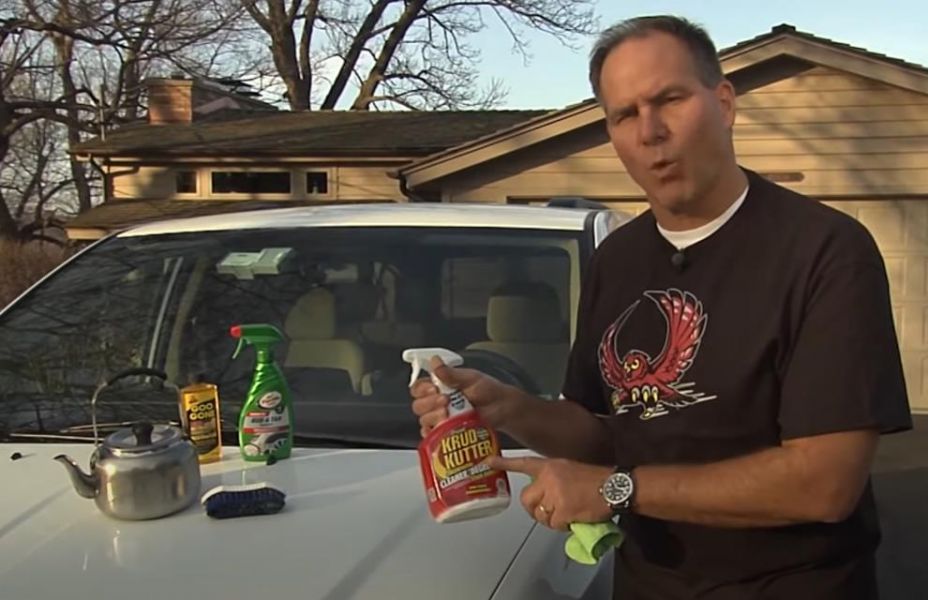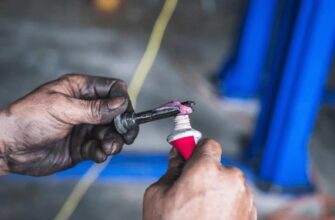Tree sap on your car can be annoying and hard to remove. If left for too long, it can even damage your car’s paint job. This article will show you how to safely remove tree sap from your car without causing any damage. Read on to learn the best methods and products to get rid of stubborn sap stains.

Why You Should Remove Tree Sap Quickly
When tree sap gets on your car’s paint, it should be removed as soon as possible. The longer it sits, the harder it will be to remove. Sap contains sugars that can eat away at your clear coat, staining or etching the paint. It may also discolor or fade the paint over time. Removing fresh sap is much easier than dealing with dried, hardened sap. Take action quickly to prevent permanent damage to your car’s appearance and value.
Can Tree Sap Really Damage a Car’s Paint?
Yes, tree sap is capable of damaging your car’s paint if left on for too long. The sugars and acids in sap can corrode protective clear coats, stain the paint, and etch surfaces. Sap essentially “bakes” onto the paint in hot weather, bonding strongly to it. The longer sap remains, the deeper it can penetrate the clear coat and paint layers. Gentle, safe removal is key to avoiding scratches or swirls in your car’s finish.
What Type of Sap is Most Problematic?
Pine tree sap tends to be the stickiest and most stubborn type of sap. Maple, spruce, larch, and willow trees also produce very sticky, tacky sap. The sap from these trees contains more sugars than other types, making it more likely to bond strongly and damage paint. Sap from trees like ash, birch, and poplar tend to be easier to remove. However, all tree sap should be cleaned off painted car surfaces promptly.
What is the Best Way to Remove Fresh Sap?
For fresh sap that has not hardened, try wiping it off first with a soft, dry cloth. If this does not remove it, apply some isopropyl alcohol to a clean cloth and gently rub the area until the sap is gone. Test first in an inconspicuous spot to ensure the alcohol does not dull or stain the paint. You can also try commercial tar and sap remover sprays or wipes, following label directions.
How Do You Remove Hardened Tree Sap From a Car?
Hardened or dried sap is more difficult to remove safely. Soak a cloth with isopropyl alcohol or an automotive tar remover product. Place it over the sap for 1-2 minutes to soften it. Reapply more product and gently rub at the sap stain with the cloth until it lifts away. Avoid scraping or aggressively scrubbing, as this may scratch the clear coat. If needed, wash the area with soap and water after sap is removed.
Can WD-40 or Olive Oil Remove Tree Sap?
WD-40 or olive oil can help somewhat with soaking and softening tree sap. However, they are not as effective as dedicated sap or tar remover products. The key chemicals in these removers – such as xylene, methanol, acetone, and others – break down and dissolve sap residues better than oils. Stick to isopropyl alcohol or cleaners made for sap and tar removal.
What About Using Heat or Steam to Remove Sap?
Applying localized heat or steam is generally not recommended for removing tree sap. While it may initially soften the sap, heat can also make it spread out and sink deeper into the clear coat. The high temperatures can burn or damage paint. Stick with chemical solvents designed to dissolve sap instead of attempting heat or steam removal.
Can Bug and Tar Remover Work on Tree Sap?
Yes, you can use a bug and tar remover spray or wipe to eliminate tree sap from car paint. Many leading automotive brands like Meguiar’s and 3M make products that work well on both tar and sap. The active chemical ingredients like xylene, butyl acetate, and ethyl alcohol will quickly break down pine resin or maple sap. Follow label directions closely.
Are There Home Remedies to Remove Sap?
Some home remedies like rubbing alcohol, acetone nail polish remover, or lighter fluid can remove fresh sap with care. Use caution and test on an inconspicuous spot first. Other DIY solutions are less effective and risk damaging paint, like gasoline, paint thinner, bleach, and turpentine. Avoid abrasives like steel wool or sandpaper that will scratch your finish.
How Can I Prevent Tree Sap Damage in the Future?
- Park your car in the garage or under a carport whenever possible. This protects the paint from sap falling from trees.
- Wash your car frequently to prevent sap from accumulating.
- Apply a wax or paint sealant to make sap removal easier.
- Check the car often for sap buildup and remove it quickly.
- Avoid parking under pine, maple, larch, spruce, or willow trees which have very sticky sap.
- Move vehicles during times of heavy sap flow like late winter or early spring.
Video how to Get Rid of Tree Sap on Your Car
This video contains the most popular and current tips for cleaning the hood and other parts of the car from drops, dirt and other things. What should be used and which means are better
When to Call a Professional for Sap Removal
If you are unable to safely remove stubborn, hardened tree sap stains yourself, have a professional detailer handle it. They have access to commercial-grade cleaners and tools that can dissolve and extract sap without damaging paint. Professionals can also properly re-polish and wax the paint after deep cleaning. Call a pro if you see etching or other sap damage forming on your car’s finish.
In summary, tree sap can seriously damage your car’s paint if left unchecked. By using the right removal methods and acting quickly, you can easily eliminate sap without harming the finish. Be gentle yet persistent, and avoid excessive heat or scrubbing. With some diligence and these sap removal tips, you can keep your car gleaming.
Our short FAQ related to removing tree sap from cars
- What is the best way to remove fresh tree sap from my car? The best way to remove fresh sap is to wipe it off with a soft, dry cloth first. If that doesn’t work, apply some isopropyl alcohol to a clean cloth and gently rub the area until the sap is gone. You can also use commercial tar and sap remover sprays or wipes.
- How can I get rid of really stubborn, dried sap stains on my car’s paint? For hardened sap stains, soak a cloth with isopropyl alcohol or an automotive tar remover product. Place it over the sap for 1-2 minutes to soften it. Reapply more product and gently rub at the stain until it lifts away. Avoid aggressive scrubbing.
- Is it okay to use rubbing alcohol or nail polish remover to remove tree sap? Yes, rubbing alcohol or acetone nail polish remover can help dissolve fresh tree sap. Use caution and test on an inconspicuous spot first to ensure they don’t damage the paint.
- Can tree sap actually damage my car’s paint if I leave it on too long? Yes, the sugars and acids in sap can eat away, stain, and etch your car’s paint if left for too long. Removing it quickly prevents permanent damage.
- What type of tree sap is the hardest to remove from car paint?
Pine, maple, spruce, larch, and willow sap tend to be the stickiest and most stubborn to remove from car paint. - Should I use hot water or steam to remove sap or will that damage my car? Avoid using heat or steam to remove sap. While it may initially soften the sap, the high heat can cause more damage to your car’s paint.
- Are there any home remedies that can remove dried sap just as well as commercial products? Home remedies like rubbing alcohol, acetone, and lighter fluid can help, but commercial sap and tar removers work best. Avoid abrasives or cleaners like gasoline or paint thinner.
- Is there a way to “sap-proof” my car to prevent sap damage in the future? Washing frequently, garaging your car, applying wax/sealant, avoiding certain trees, and moving cars during heavy sap flow can help prevent sap issues.
- How soon should I try to remove tree sap from my car’s exterior? You should remove sap as soon as possible, when it’s fresh. The longer sap sits on paint, the harder it is to remove and the more likely it is to cause etching or staining.
- At what point should I take my car to a professional detailer for sap removal instead of trying it myself? If you are unable to safely remove stubborn, hardened sap stains yourself, have a professional do it. They have tools and cleaners that can remove sap without paint damage.
SUMMARY
In summary, tree sap can seriously damage your car’s paint if left unchecked. By using the right removal methods and acting quickly, you can easily eliminate sap without harming the finish. Be gentle yet persistent, and avoid excessive heat or scrubbing.
If the sap is fresh, deal with it quickly by applying remover or alcohol directly on the tree sap and letting it sit before wiping. For really stubborn tree sap stains that seem impossible to remove, try a commercial cleaner made specifically for removing tree sap. Or use a cotton ball soaked in remover and held on the sap. Taking the time to safely get rid of sap is the best way to prevent damage to your car’s exterior. With some diligence and these sap removal tips, you can keep your car gleaming.








